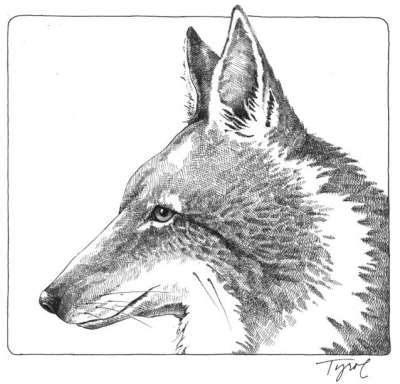
As any biologist will tell you, different species of animal can’t breed with one another. Well, they can, but nature has a way of jumping in and nipping such cross pollination in the bud. For example, a horse can mate with a donkey, but the resulting honkey (ok, mule) should be sterile. Cattalo (cow/buffalo crosses) produce sterile males. Whitetailed deer/blacktailed deer crosses produce sterile females that presumably have gray tails.
But as an evolutionary biology student might tell you, there always seems to be a confusing exception to these so-called rules. Around here, that exception is the eastern coyote (Canis latrans), a species that can freely hybridize with both dogs and wolves and produce fertile offspring.
Coyotes didn’t used to live here. Historically, wolves ruled the forests in the Northeast, and coyotes were something that lived out west. Habitat loss and human exploitation wiped out the wolves in the mid-1800s, and for 100 years that was pretty much that.
But 60 or 70 years ago, a strange little wolflike creature started showing up in our region. At first, people didn’t know what to make of it. It sort of looked like a western coyote, but it was about 30 percent bigger. And its color palette was all over the map. Trappers were bringing in creatures that were all black, or blond, or reddish. Some looked like German-shepherds, which led to the colloquial term coy-dog. But this new animal’s skull didn’t look like a dog’s or a coy-dog’s, it looked more like a cross between a western coyote and a wolf. Today, DNA evidence is proving that that’s exactly what the eastern coyote is.
Several years ago, coyote hunters and trappers from Ohio to Maine contributed nearly 700 coyote tissue samples to a coyote genetics study led by Dr. Roland Kays at the New York State Museum. Every northeastern animal except one in the study contained a combination of wolf-like and coyote-like genes – only one sample was dog-like. What’s more, the scientists were able to determine that the wolf DNA was typical of wolves from eastern Canada and the Great Lakes region. The genetic patterns in the coyotes from Ohio, however, have no wolf-like influences and closely resemble western coyotes.
By comparing the DNA analysis to historical records, Kays developed a theory that the coyotes in the northeast arrived in two separate waves. The northern group emigrated east through Ontario, picking up wolf genes along the way. This hybridization led to larger, faster bodies and more wolf-like feeding habits. (Western coyotes focus on rabbits and rodents for the meat portion of their omnivorous diet; the eastern coyote eats more deer and fewer mice.) The second group emigrated east from Indiana through Ohio and Pennsylvania. The coyotes in the Adirondacks, Vermont, New Hampshire, and Maine trace their roots back to the northern front, while animals in western New York and Pennsylvania represent the purer western coyote strains that are moving east. In that area, the northern coyotes are mixing with the western coyotes, and with each passing breeding season, the cards are getting more and more jumbled.
Because coyotes are turning out to be such a genetic hodgepodge, the joke in mammology circles is that in deference to the gray wolf’s scientific name, Canis lupus, the coyote should be renamed Canis soupus. Kays says that it’s anyone’s guess as to how the evolutionary history of the eastern coyote will play out. He doesn’t know if the two groups recognize each other as being different. He doesn’t know if one set of genes will prove more successful than the other. Maybe evolution will favor the genetics from the northern wave, as the bigger bodies make the animals better deer hunters. Or maybe the purer, smaller western-type genes that came from the south and east will prove more successful in our fragmented, increasingly suburban landscape.
One thing we are sure of is that in 60 years time, coyotes have firmly established themselves as residents in just about every corner of the Northeast. They’ve also done a great job of turning conventional biological wisdom on its head.


Discussion *